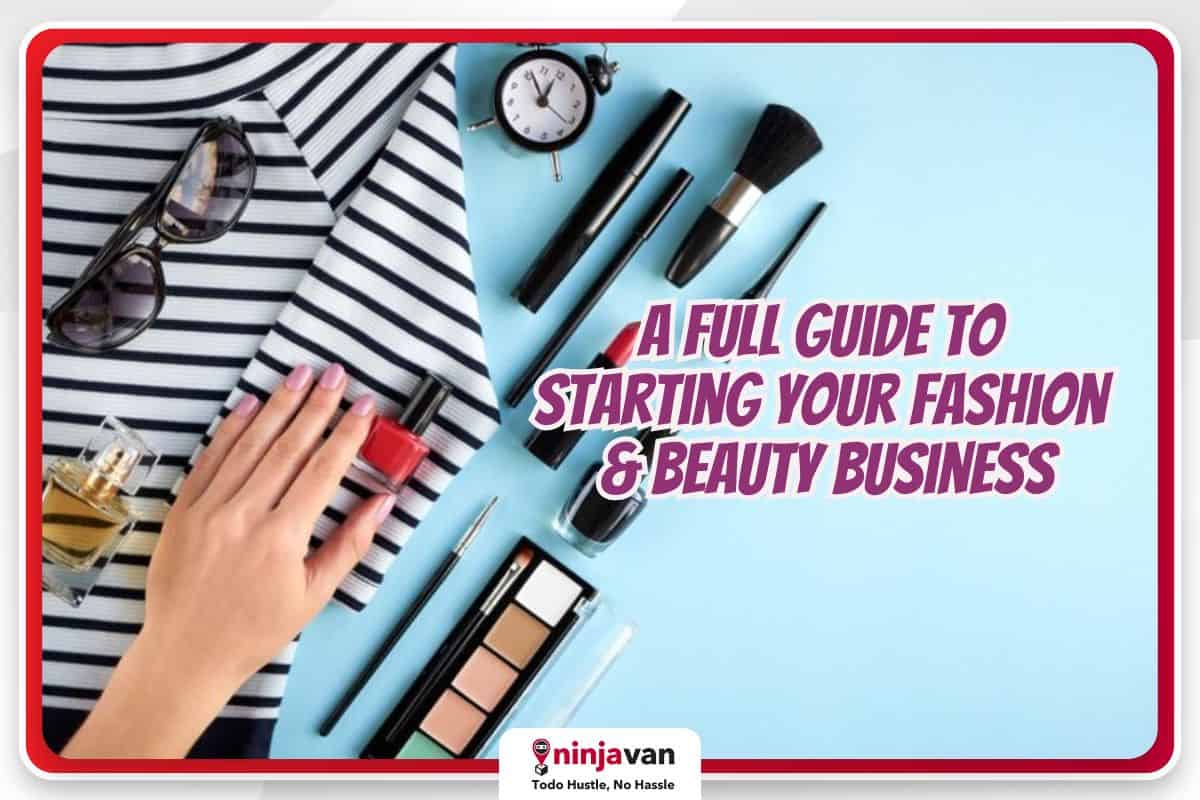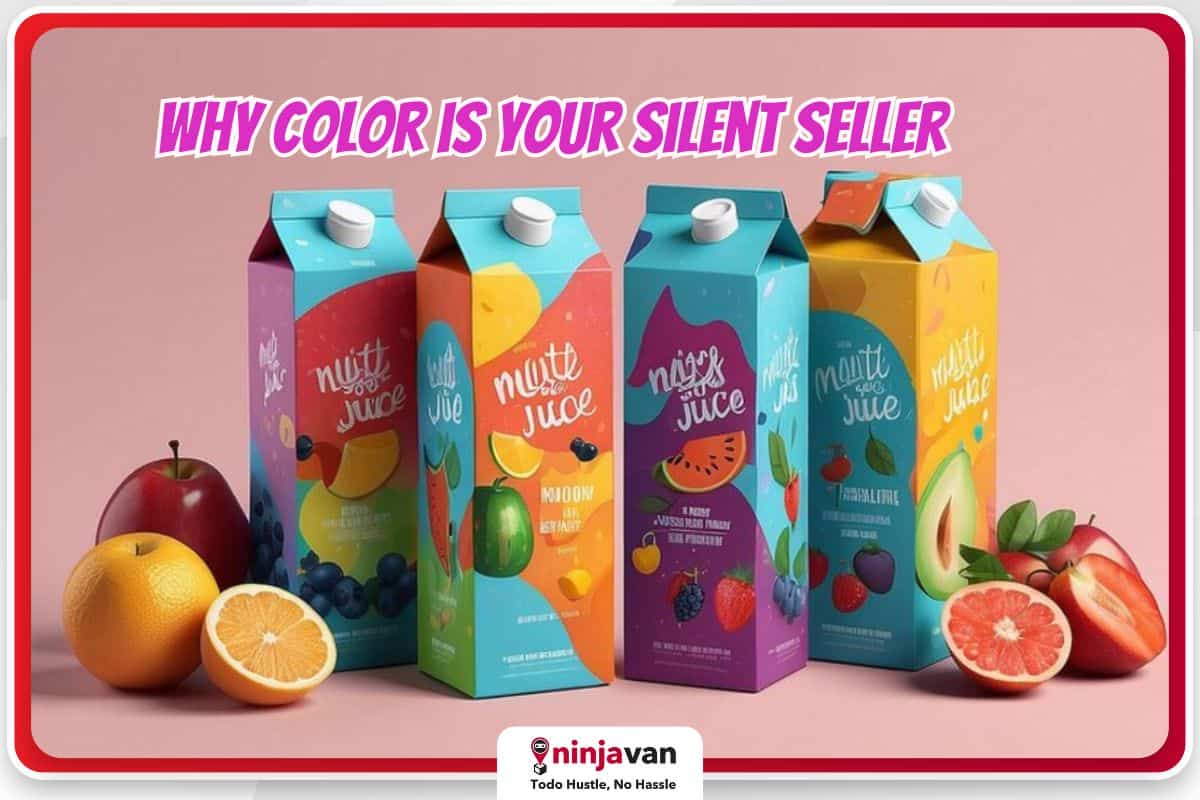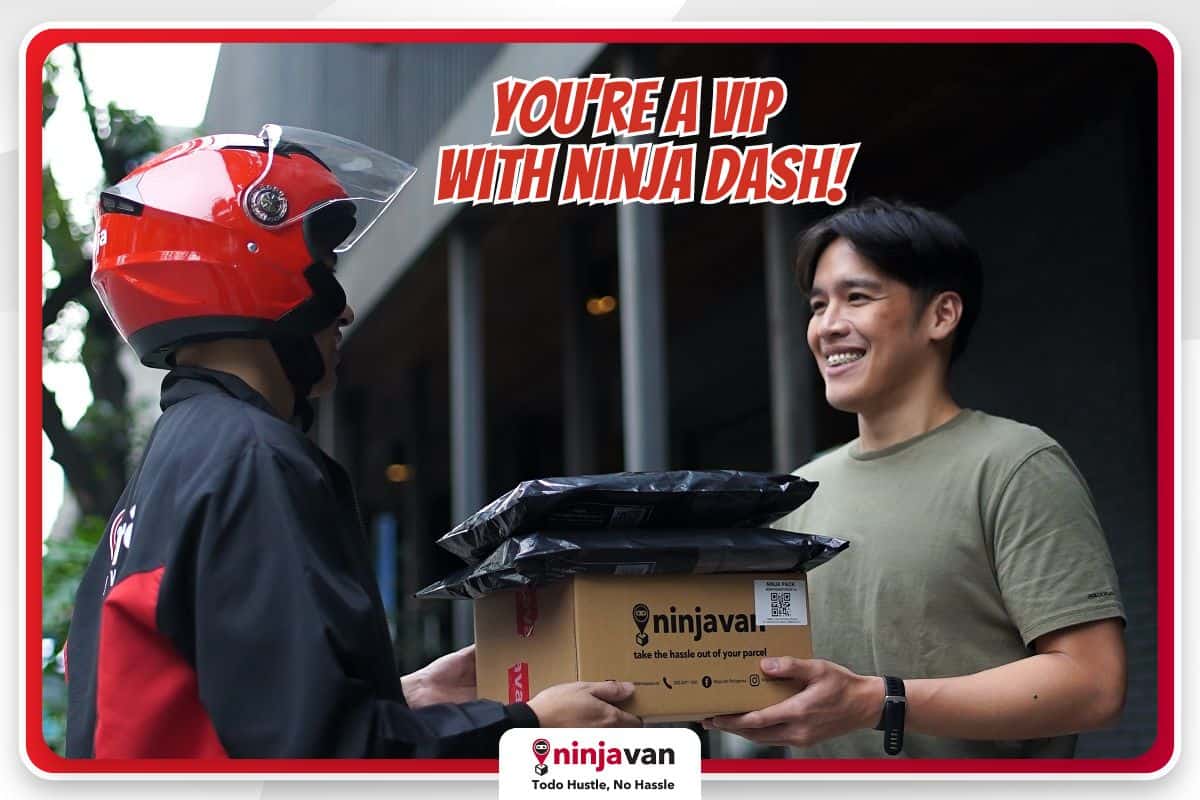The fashion and beauty industry is always growing. Social media platforms, like Instagram and TikTok, continue to change the way people engage with fashion and beauty brands, discover new products and understand the importance of looking good.
With the growing demand for products that help people achieve their #AestheticGoals, this is where you — the aspiring fashion and beauty entrepreneur — enter the scene. But where do you start?
The steps to starting a fashion or beauty business are almost the same, but there are slight differences. So we’ll fully discuss them here for you!
Starting your beauty business: a step-by-step guide
It’s not enough that you really like makeup or maybe you like to do a beauty blog or vlog about your latest hauls online. You also need a lot of business sense, market research and planning.

Set your goals
Start your journey by setting your goals. What are the results you want?
Say you want to start a line of sustainable beauty products online. The goal determines your direction. Your next steps will include searching for high-quality beauty ingredients, designing the packaging and learning about industry best practices.
Don’t be afraid to set small and realistic goals first before proceeding with the following steps.
Research the market
Even if you’re a big beauty product aficionado and know a thing or two about foundation formula, it pays to still do your research.
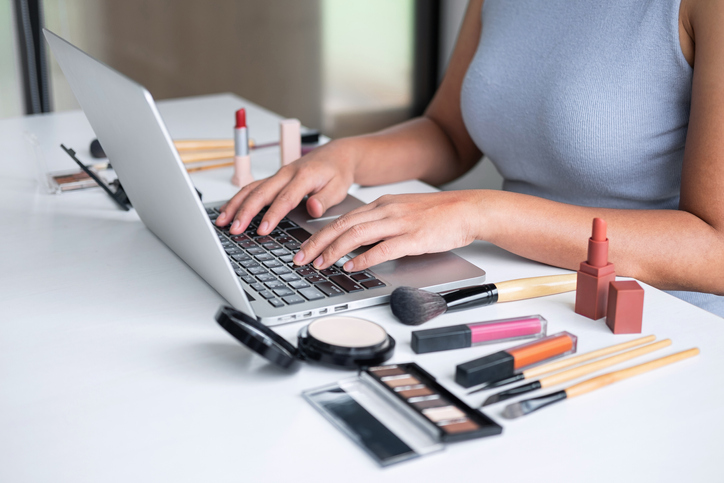
For instance, the Allied Market Research’s report reveals that the Philippines’ beauty and personal care market is projected to reach $4.7 billion by 2026. When analyzing the fashion and beauty market, consider the other niches included under its umbrella, like: beauty products for men, vegan products, products for sensitive skin, etc.
Also, do a competitor analysis and learn more about the products of similar businesses. Study successful names in the industry; pinpoint the areas they’re excelling in and learn more about their weak points (as well as how you can improve in said points).
Find your niche
Your niche is your area of expertise and your focus. The beauty business is a vast industry; it’s tempting to jump into all aspects of it. However, choosing a large niche might make it difficult to compete against popular brands.
If you’re struggling with finding a specific niche, consider the following:
- What are the concerns of your target market? For example, are they dealing with pimples or dark circles? Position your service or product as the solution.
- Why you do what you do. Why are you in the beauty business? The industry is saturated with influencers and marketing gimmicks. Stand out with authenticity.
- Learn more about your potential niche. Is there a demand for your service or product? It’s okay to focus on a smaller niche first, they may prove more profitable than competing for a huge market share.
- Check out the competition. If there’s no one in sight (or there are a few) and there is a high demand, your business has the potential to make it big. But if there are competitors, analyze their weaknesses and learn how you can improve on them.
By finding your niche, you narrow down your focus areas, which makes planning easier. It also simplifies the financial aspect of your business since the niche will dictate how much capital you need.
Source your beauty products or materials
What are you going to sell? Korean beauty products? Street fashion items? Also, how are you going to produce them: make them yourself or find a white label supplier? Or do you simply want to resell branded items instead?
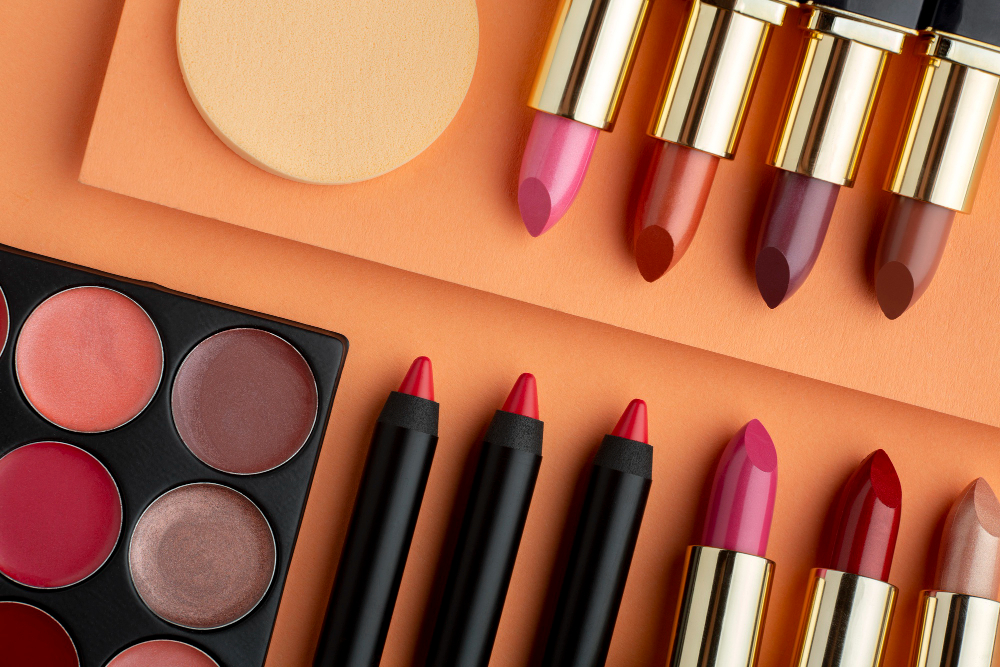
Here are some of your options:
Produce your own. One of the perks of DIY is you’ll be selling unique products that can be hard to duplicate. You also have full control over the quality of your product, as well as direct control over your inventory.
However, creating your own beauty products requires a lot of testing and production space. It also comes with a higher cost of materials. On top of that, there’s a constant need to source raw materials.
White label suppliers. Working with a white label manufacturer, you can sell their inventory with some customizations according to your specs. It’s also a good way to diversify your range of cosmetic items.
White label companies can customize the packaging to reflect your brand. Or you can opt to purchase the products outright from the company and add the labeling and branding yourself.
Private label manufacturers. With a private label manufacturer, they can produce custom products exclusively for you. Meaning you have ownership of the products and they will not be offered to other vendors. It can be more expensive than white label products, but it’s an edge to your beauty business if you have the capital for it.
Dropshipping. With this method, the vendor fulfills your orders. All you have to do is list their inventory on your site, get the orders and let your dropshipping partner handle the packaging, shipping and delivery to your customers. Consider dropshipping if you’re starting a new online shop or planning to expand your existing catalog.
One of the downsides of dropshipping is a lower profit margin. Before you make a profit, you have to sell a lot. You also face fiercer competition with businesses that source the same products. On top of that, you have little control over the quality of the beauty products.
Food and Drug Authority (FDA) guidelines are another important consideration when choosing your products. If you’re selling cosmetic items, make sure that they’re safe and approved for use.
This rule falls under the jurisdiction of the FDA. Familiarize yourself with the laws concerning beauty products by reading Republic Act No. 3720.
Create a brand name and register
Once you’ve finalized your product line, it’s time to name your business. The name should reflect you and your products. At the same time, it should be creative and memorable.
After you choosing the business name, confirm its availability. Search them on the Department of Trade and Industry’s (DTI) website and check if it’s available for use. If it is, follow these steps to register your business:
- Fill up the registration form online through the DTI’s Business Name Registration System. You’ll be provided with a reference code, which you’ll use with all of your BNRS transactions.
- Once you’ve filled up the form, pay the registration fee within a week of your application. You can pay the fee using a credit/debit card or via Maya or GCash.
Design the packaging
Your product packaging is everything, especially since many people do unboxing videos online. Plus, eye-catching packaging attracts the eyes of customers shopping in physical stores.
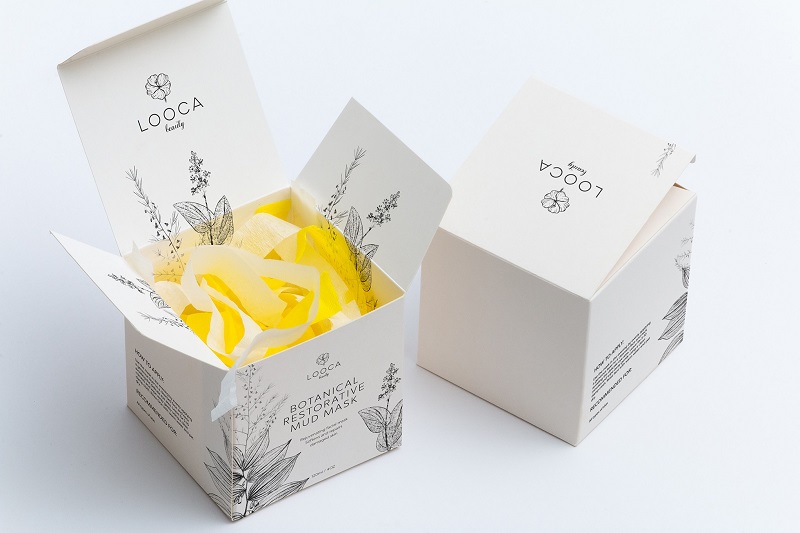
Start with a basic design, but make it custom to reflect your brand’s personality. Prioritize custom labels and logos before you move to branded stickers, pretty mailers and other merch. You’ll need to work with an artist or a branding creatives team to create effective product packaging.
Also, be careful with what you write on your packaging. Refrain from claiming that your product can do something without being sure of it or being certified by the FDA.
Open an online shop
Having a physical store alone is no longer enough. Ecommerce sales drastically increased in the last few years but and people are now fans of online shopping platforms like Shopee or Lazada.
Of course, you should include building an ecommerce website for your brand. But you can start selling immediately through these popular marketplaces as you’re guaranteed customers and a steady stream of traffic.
FINALLY: Start selling
Once you’ve got the basics finalized, pick a launch date for your store and build the hype online and offline.
Before and after your launch, have a solid marketing strategy to stay relevant, as well as to catch the attention of potential customers.
When it comes to selling and marketing new products, get creative and brainstorm interesting ways to make your products stand out. Whether it’s social media branded posts or working with influencers, always go the extra mile with your marketing.
Best practices for positioning your fashion ecommerce business
The steps to starting your fashion business are almost the same. The only difference, of course is in the product types, however, the same principles apply as when starting your beauty brand.
Here are more tips on making your fashion business successful online.
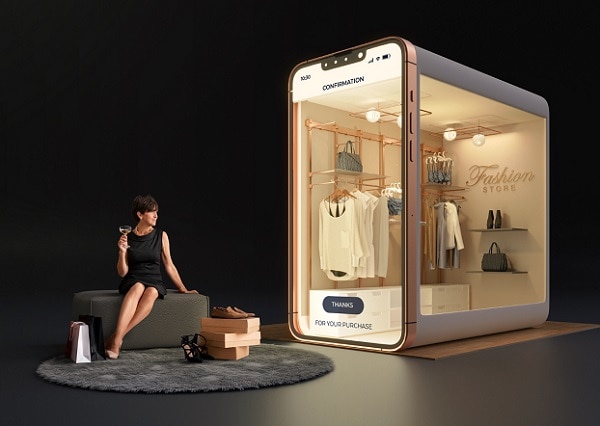
Pick an ecommerce business model
The Philippines tends to lean conservative when it comes to business practices. This is especially true with fashion retail, where brick-and-mortar shops in malls have been the prevailing business model for decades.
Therefore, it’s not enough to simply open an online store and hope that if you build it, customers will eventually come. You need to pick a particular business model that’s scalable, matches your product, and aligns with your target audience.
Consumer-to-consumer (C2C)
The C2C model is the gateway for new online sellers, enabling them to set up shop on places like Facebook and Instagram for free. Fashion micro-entrepreneurs have also taken to Instagram to post photos and videos of their items, linking their wares to their stores on Shopee and Lazada. You’ll find some examples of C2C stores below.
The C2C model is typically limited to smaller sellers and micro-businesses that tend to deal with smaller and less frequent deliveries. Still, it’s a good idea to look for an ecommerce logistics partner that can accommodate on-demand and scheduled deliveries.
#NinjaTip: Your ecommerce business needs the right delivery partner. Get the best e-commerce shipping with dedicated account management, big rebates, and fast COD remittances when you Sign up for a Ninja Van VIP Shipper account!
White labeling
White label or private label products are generic, mass-manufactured goods that are sold to resellers or distributors, who then customize them with their logo or brand colors.
White label products have multiple benefits:
- They’re ideal for sellers looking to capitalize on trendy products (e.g., eyewear, accessories).
- They’re great for starting a business quickly with little upfront investment.
- They’re ideal for sellers with no resources for R&D and manufacturing.
- They allow sellers with a personal or influencer brand to leverage their image with personalized merchandise.
- They can be ordered and packaged in bulk on demand.
Although once associated with low-quality and cheap products, white labeling is a tried and proven strategy by many brands in the Philippines. Differentiation is the key to winning with this model. Your branding and marketing need to be on point to stand out from other sellers carrying the same products.
Dropshipping
As mentioned above, dropshipping is a retail fulfillment model where a store orders items from a third party (e.g. a wholesaler), which then ships these products directly to the customers that ordered them.
This model gives sellers the freedom of not having to keep inventory and pay for warehousing costs. All you need to do is focus on finding reliable suppliers, setting up your business, promoting your online shop, and making sure you provide an excellent shopping experience to your customers.
#DidYouKnow? that Ninja Van can help you to buy goods from China and Southeast Asia with our end-to-end sourcing and procurement services? Learn about Ninja Direct here.
Get creative with marketing
With Filipinos spending so much time on their smartphones, memes have become the currency of viral marketing in the country. The more meme-able your marketing strategy is, the better.
But remember that playing around with memes and offbeat ads is about authenticity and not trying too hard. Take care not to be too ham-fisted when experimenting with your marketing messages.

You can also leverage TikTok for your online store’s organic content marketing. TikTok isn’t just about trendy dances and memes—it’s home to a young and engaged audience that’s more discerning than ever about their shopping choices.
Also read: Why TikTok is The Perfect Platform for Fashion & Beauty Brands
Take advantage of social media shopping features
The Philippines is the social media capital of the world for a reason. As a mobile-first country, almost everyone has a smartphone. And almost anyone with a smartphone is on Facebook, Instagram, or Twitter.
Social media networks have also made moves to bridge the gap between product discovery and shopping — all without having to leave the app. This makes social commerce a strong platform for many Filipino sellers.
Embrace social responsibility
Gen Z and millennials are driving the force behind socially responsible fashion brands because of their focus on ethics and sustainability. Unlike previous generations, they’re more conscious of the environmental impact of the fashion industry and how it treats workers.
They’re willing to spend more on clothes that are produced ethically, using recycled materials or with fair labor practices. This aligns with their desire to make a positive impact and reflects a sense of social responsibility in their buying choices.
Join pop-up markets
Even in an omnichannel world, fashion retail will always have a physical element that ecommerce can’t fulfill. People still want to feel fabrics, check the fit of clothes and shoes, and just see what an item looks like with their own eyes.
In other words, brick and mortar retail is unlikely to go away in a post-pandemic world, more so in the Philippines where malls aren’t just shopping centers but also lifestyle hubs. This isn’t to say that online sellers need to open a physical store. But they can take advantage of pop-ups with other brands.
Sweeten the pot with free shipping
Free shipping acts as a powerful magnet for online shoppers. It eliminates a surprise cost at checkout, a major turn-off that can lead to abandoned carts.
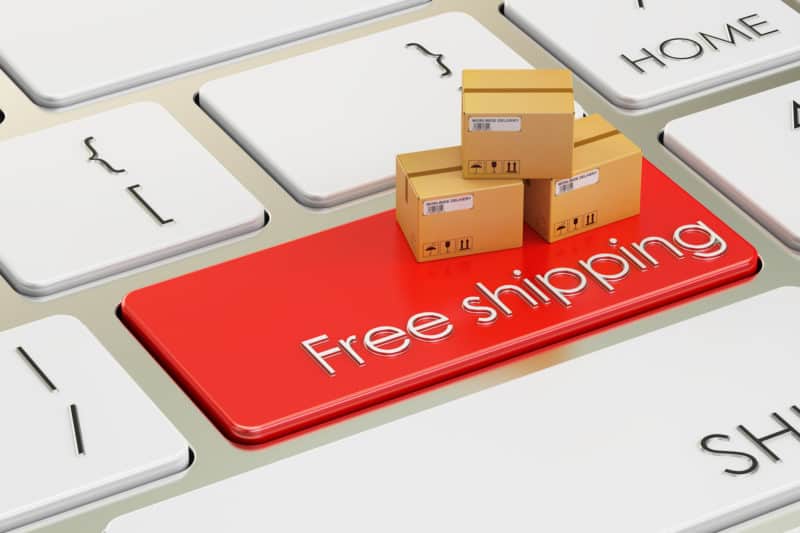
By removing this hurdle, free shipping simplifies the buying process and makes the final price more transparent. This perceived value increase entices customers to complete purchases they might hesitate on otherwise.
Additionally, free shipping can encourage customers to spend more to reach a minimum threshold, boosting your average order value.
Prepare for shopping holidays
If malls have payday sales, online marketplaces and ecommerce players have online shopping holidays, especially during the year-end shopping season. Take advantage of the opportunity to piggyback on the flurry of online shopping activity on days like 10.10, 11.11 (Singles’ Day), and 12.12.
When eyeing for shopping holidays, be sure to begin planning months ahead of the event. Filipinos like to do their homework when making a purchase decision, performing up to seven online searches before doing so. This means that Pinoys have a longer customer journey, making it important to prime them with marketing messages well before your shopping event.
Check out our Ecommerce Tips to Drive Sales During the Ber-Months.
The final touch for your fashion and beauty business
Starting your fashion and beauty business online can seem difficult, but the most overwhelming part is getting started.

Once you overcome the hurdles, establish your brand and open your online shop, add some business savvy into the mix, and you’re on your way to building your potential as a trusted seller of fashions and beauty products online.
ONE FINAL TIP: Once your fashion and beauty online store starts growing, Ninja Van will help you to easily expand without increasing your manpower or costs. Ninja Fulfillment is the right solution to streamline all your logistics needs — warehousing and storage, inventory management, order fulfillment and shipping — so you can focus more on your business growth.

